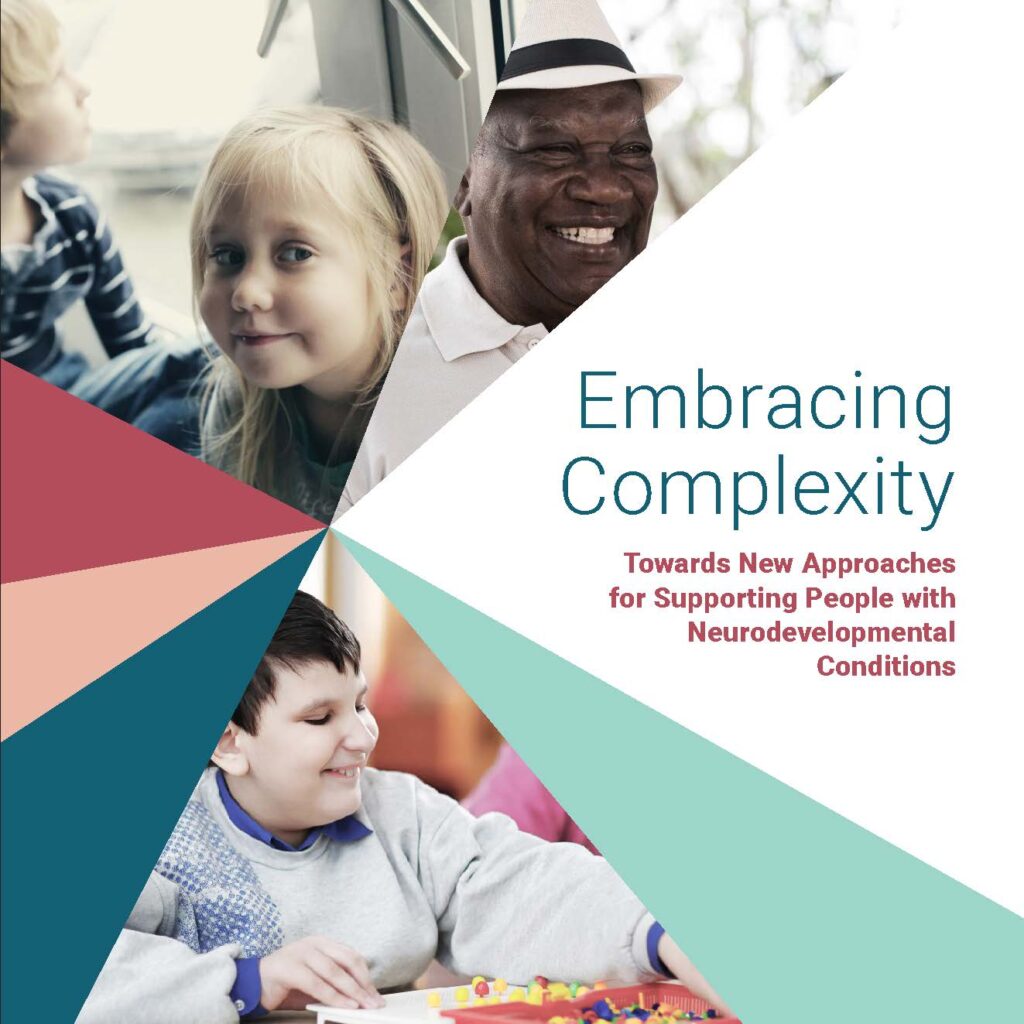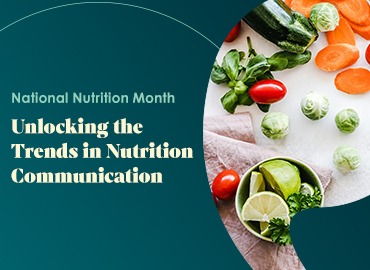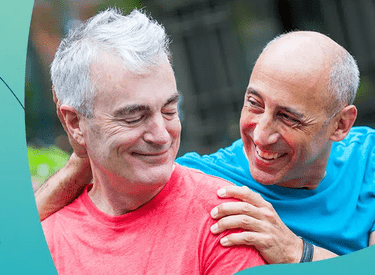
By: Katherine Rapp
“Have you seen that new nutrition documentary on Netflix? It’s right up your alley.”
After multiple recommendations, I sat down to watch You Are What You Eat: A Twin Experiment. The 2024 documentary is a fascinating look at the effects of a healthy omnivore diet versus a plant-based diet. What struck me the most was how many food and nutrition-related topics it covered throughout the course of four episodes.
As a public health communicator with a background in food science, I began to view the documentary as a compilation of different approaches for communicating about food and nutrition to the public. In fact, the documentary taps into four key trends that communicators can use to effectively talk about and educate people on food and nutrition.
Trend #1: Frame Food as Medicine
The first and most obvious trend seen in the documentary is food as medicine, which involves emphasizing the preventive and healing properties of food. Food as medicine is a way of communicating about nutrition that encourages people to view their dietary choices as part of their overall health. It promotes the idea that by consuming a balanced and varied diet that is rich in whole foods, people can help prevent and manage chronic diseases, boost their immune system, and support optimal health.
Rather than focusing on treating the symptoms of chronic health conditions with medications, food as medicine goes to the root cause and looks at what people are putting in their bodies and how that affects health outcomes. This preventive, positive approach is being used more and more broadly, by grocery stores, meal delivery programs, and even the federal government. By positioning food as medicine in communication about nutrition, communicators can inspire others to take action to improve their health through what they eat.
Trend #2: Storytelling Sings
While the documentary covers a lot—everything from visceral fat to the gut microbiome to epigenetics and biological age—it doesn’t feel like the video equivalent of a nutrition textbook. The way it accomplishes this approachable, engaging tone is through strong storytelling.
The documentary follows four sets of twins on their journeys following either an omnivore diet or a plant-based diet. They represent a range of ages, ethnicities, and backgrounds, and we learn about their unique struggles and successes throughout the course of the study. By anchoring the documentary among these eight people, we learn about the science of nutrition with them and get context on what these concepts mean for real people and their lives.
Like for many other complex health topics, nutrition communication must be evidence-based and backed by science. Being factually correct isn’t the only thing, however; communicators should create a connection with people by showcasing the stories of others to whom they can relate.
Trend #3: Connect It to Culture
Even though nutrition is a science, it’s also an art—because people and the food they put on their plates do not exist in a vacuum. Food is a powerful cultural symbol that represents the traditions, beliefs, and values of different communities. It is a medium through which people can express their identity and heritage. It is essential that food and nutrition are not divorced from their cultural context.
Along these lines, it’s essential that nutrition educators develop culturally competent communications materials and resources that are appropriate and relevant to people and their unique backgrounds. Additionally, nutrition communication must acknowledge and integrate the drivers of health, recognizing that access to nutritious food, socio-economic status, education, and cultural norms significantly influence dietary choices and health outcomes. By doing so, it can address health inequities, tailor interventions to specific community needs, and promote a more inclusive approach to nutrition.
Trend #4: It’s All One Health
What sets this documentary apart from other recent nutrition documentaries is its integration of One Health topics. One Health emphasizes the interconnectedness of human, animal, and environmental health and the importance of collaboration among these related stakeholders. Essentially, it says that we can’t talk about human nutrition without talking about livestock and cattle production, agricultural practices, and climate change.
The documentary posits that the same things that promote our health also promote the health of our environment. It takes us across the globe to look at how concentrated animal feeding operations expose humans to antibiotic-resistant bacteria, industrial fishing depletes the diversity of ocean ecosystems, and the magnitude of livestock raised for meat is warming the planet to dangerous levels.
The documentary also highlights promising solutions that span human, animal, and environmental health – including urban agriculture, plant-based alternatives to animal products, and introducing healthful and culturally relevant food options in hospitals. It’s important for communicators to have this same solutions-focused approach and to look at nutrition messaging through the lens of health across sectors.
By tapping into these four trends, communicators can work to effectively engage people with the nutrition information they need. Communicators can motivate people to improve their health through what’s on their plate while connecting to their own experiences and tying to the broader context of our collective health.
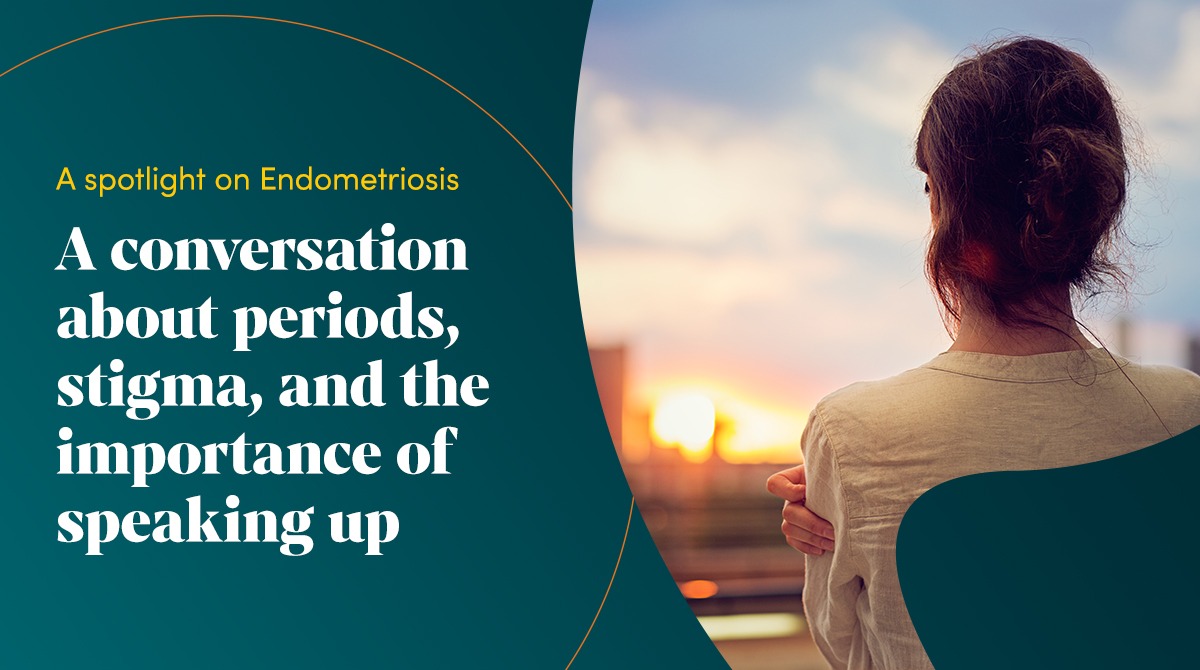
“To be yourself in a world that is constantly trying to make you something else is the greatest accomplishment”
Ralph Waldo Emerson
By: Diane Wass, Rebecca Taylor and Sarika Varma
Previous Account Director at JPA Health, now Policy Manager at Endometriosis UK, Rebecca Taylor speaks to us about the changes needed to improve patient care and the vital work Endometriosis UK is doing to help reduce the impact of endometriosis on patients.
Estimated to affect 10% of women and those assigned female at birth worldwide, endometriosis is a menstrual health condition, where cells like the ones in the lining of the uterus, are found elsewhere in the body.[1] With each menstrual cycle, these cells behave as endometrial cells in the uterus normally would, by thickening, breaking down and bleeding. However, unlike the cells in the uterus that leave the body as a period, this blood has no way to exit the body and, therefore, becomes trapped, causing inflammation, pain, and the formation of scar tissue.[2] It is estimated that around 1.5 million women and those assigned female at birth in the UK have endometriosis and the average time taken to diagnose the condition is eight years.[3] Talking to Rebecca Taylor, we discuss why there are delays to obtaining a diagnosis, what their biggest unmet need is, and what the treatment options are for patients.
Considering how prevalent the disease is, why does endometriosis take so long to diagnose?
I like to present this answer as a series of barriers that individuals face when it comes to obtaining a diagnosis. The first barrier is individual awareness. Even though the prevalence of the disease is high, public awareness around the disease is low. Therefore, many who have been experiencing symptoms for years are unaware that they should be seeking medical care.
The second barrier is friends and family awareness; this is when those who are experiencing symptoms open up to a friend or a family member about their symptoms and are met with disregard. In this situation people will often hear “oh that’s just part of being a woman” and “it’s normal for periods to be painful”, resulting in them not seeking medical care, as they believe their symptoms to be “normal”.
The third barrier is healthcare professional (HCP) awareness, which occurs when those experiencing symptoms go to their healthcare provider who either dismisses their symptoms or investigates them for another condition that has similar symptoms, for example IBS. Endometriosis is a syndrome, where patients can experience a wide range of symptoms that are also common to other diseases and it can, therefore, be misdiagnosed. In addition to this, depending on how the disease presents itself, it cannot always be detected using scans, and in such cases a diagnostic laparoscopy (a form of keyhole surgery) is needed to confirm the disease. In the UK, the current pandemic related backlog in gynaecology and endometriosis specialist centres including diagnostic laparoscopy has also contributed to the delay in diagnosis. A new report from the Royal College of Obstetricians and Gynaecologists estimates that gynaecology waiting lists across the UK have now reached a combined figure of over 570,000 women, just over a 60% increase on pre-pandemic levels.[4] However, whilst misdiagnosis and lack of access to gynaecology and endometriosis specialist centres contributes to this delay, really the biggest hurdle to achieving a diagnosis is lack of awareness, which is ultimately rooted in the harmful misconception, that periods are supposed to be painful.
It’s astonishing that in the UK, it takes on average, almost a decade to achieve a diagnosis. Once patients receive one, are there effective treatment options for them?
Several different therapies exist to treat endometriosis. The most common are hormonal treatments, pain relief, and surgery. Because endometriosis is a spectrum disease, patients can experience a wide range of symptoms and it is, therefore, impossible to say “what the most effective” treatment is. For those experiencing mild-symptoms surgery may not be necessary, whereas for patients who can no longer function on a day-to-day basis due to the pain, surgery may be their best option. Therefore, treatments should be prescribed on a case-by-case basis. For example, we had a woman approach us wanting to find out more about surgery waiting times in her area, as her surgery had been cancelled due to the pandemic. In the meantime, she had been prescribed some pretty heavy-duty opioids to manage her pain, but they made her feel very lethargic. As a stay-at-home mother of four who, as a result of all the lockdowns, ended up with all her children at home, daily life was demanding enough without medication side effects making her more tired. She was finally able to change treatment and get her previous energy levels back. Therefore, when it comes to treatments, we recommend patients and HCPs have an open discussion about what treatment approach is right for them. It is also important to note, that there is currently no cure for endometriosis, and that when diagnosed, only symptomatic treatments are available for the management of the disease.
As endometriosis is a lifelong disease, it must have a large impact on patient’s lives. What is the greatest unmet need for those affected by endometriosis?
Currently, the diagnostic delay is one of the greatest unmet needs for patients. Due to the time it takes for patients to obtain a diagnosis, many patients are left untreated for long periods. When symptoms are severe and left untreated, endometriosis can have a debilitating effect on all aspects of a patient’s life including struggling to go to school or work. Their social life is affected as they don’t have the energy or are in too much pain to leave the house, all of which can have a negative impact on a patient’s mental health, in addition to the physical symptoms that they experience. We had a volunteer, who suffered debilitating symptoms every month and it took her 15 years to get a diagnosis. For 15 years she was told the pain was “normal”, with doctors being completely dismissive of her symptoms. For cases like these, increased awareness of the disease in the healthcare setting is crucial in reducing diagnostic delays.
In addition to the diagnostic delays, there is a population of patients for whom the current treatment options are not effective. Therefore, even when patients receive a diagnosis, some can find themselves unable to manage their symptoms satisfactorily despite trying different treatment options. This illustrates how important it is to have further research into endometriosis to better understand the aetiology of the disease, so that curative treatments, in addition to better symptomatic treatments, can be developed.
You mentioned that increasing awareness of endometriosis is crucial for improving diagnostic delays and patient outcomes. How does Endometriosis UK work to address the unmet needs of patients and raise awareness for the disease?
Here at Endometriosis UK, we work hard to raise awareness for endometriosis across the UK. We work with media outlets, social media channels, and support groups to educate not only the public, but HCPs and decision makers as well. We work with MPs to ensure that the needs of patients are being accurately depicted at the policy level, working towards improving patient outcomes. We have worked with the Royal College of General Practitioners to develop a menstrual wellbeing toolkit, an evidence-based resource for general practitioners and other primary care clinicians to use when diagnosing, supporting, and managing the concerns of patients affected by menstrual health problems.
To support patients in the workforce, we also provide an “Endometriosis Friendly Employer Scheme”, which allows employers to confirm their commitment to developing a work environment and culture that enables employees with endometriosis to thrive at work. Through this scheme, we can provide guidance to employers on how best to support their employees with endometriosis.
In addition to the information, we have on our website, we have also recently launched a webchat run by trained volunteers, to provide a listening ear to patients looking for advice on how to manage their diagnosis and symptoms. Whilst our volunteers do not offer medical advice, they are there to support those who call in. Many patients come to us looking for understanding and compassion as well as practical information. Which is also why we have support groups all over the country. Endometriosis can have such a huge impact on a patient’s life, with a lack of understanding from the general public and healthcare practitioners, living with the disease can become very isolating. Putting patients in contact with each other and giving them a platform where they can be heard and understood, can help them manage their disease and make them feel less alone.
It seems Endometriosis UK do a lot to help patients manage the disease. On a wider scale, what actions need to be implemented to improve care for those that are experiencing symptoms or have been diagnosed with endometriosis?
Patients require accelerated access to treatment options. Because endometriosis takes so long to diagnose, patients must wait a long time before they are prescribed appropriate treatment options. One way to combat long waiting times is the implementation of a “working diagnosis”. When adopting a “working diagnosis” approach, physicians can treat patients, based on strong suspicion that they have endometriosis, whilst they wait for testing to confirm the diagnosis. This ensures that if patients must wait a long time before they can see a specialist, they are still able to be treated, allowing them to gain access to treatment and, therefore, reduce the symptomatic burden of the disease, much quicker.
Additionally, more streamlined, and effective diagnostic pathways need to be implemented to improve diagnostic timings for endometriosis patients. Reducing unnecessary GP visits, presentations to A&E and referrals to the wrong specialists will most importantly improve the patient experience, but also reduce both the time and money spent by healthcare providers. More training, awareness and support for primary care physicians will be needed to improve the diagnostic pathway for patients.
However, more generally, what really needs to change in both the public and healthcare setting, is to destigmatise the language used around periods and menstrual health and educate the public and clinicians about what is normal and what is not when it comes to periods. Whilst the spectrum of symptoms associated with the menstrual cycle varies significantly, periods that are so painful it renders people unable to function, are not normal. Patients should not feel embarrassed or shy when it comes to speaking up about their menstrual health. It is a natural biological function that can have a huge impact on an individual’s health and quality of life, if there are problems associated with it. Therefore, the general misconception that periods are “dirty” and are “supposed to be painful” need to be debunked, to encourage those experiencing pain or other symptoms to speak up about their menstrual wellbeing. Educating the public about what is and isn’t healthy can have a huge impact to empower patients to go speak to an HCP, should they be experiencing issues with their period.
What resources would you recommend to anyone that may be worried and/ or wants to get more information about endometriosis?
Endometriosis UK’s website is a great resource to start with. We have lots of information on endometriosis, including information on how the disease impacts the body, fertility, and pregnancy. Developed in collaboration with various healthcare practitioners, our information hub contains the latest information and resources aimed to provide guidance to patients on current treatment recommendations and offers strategies for the management of some of the associated symptoms of endometriosis.
For those experiencing symptoms, but are yet to receive a diagnosis, we also provide guidance on how to prepare for a consultation with your primary healthcare physician including keeping a pain and symptoms diary. This diary can be used to help with a diagnosis and can also be used by patients when submitting information for evidence, for example, when claiming for benefits, for work or school/university. We work to make our information available and accessible to everyone in the UK and encourage open conversations about periods and menstrual health in all settings. The more we speak up about the disease, the more we can do to end patient suffering, and end endometriosis.
Concluding Remarks
Endometriosis can be a debilitating, life-long condition, that can affect not only the physical health but mental health of patients. Whilst many treatment options exist, patients are faced with a wall of dismissal and ignorance that prevent them from accessing adequate care in a timely manner. And for those who do not respond to existing treatment options, even after enduring the long process of achieving a diagnosis, they continue to be impacted by the disease, as there is no cure. More needs to be done to end the silence, to end the pain, and to end endometriosis.
At JPA Health, we understand the importance of speaking up about menstrual health and take the wellbeing of our employees seriously. Menstrual health should not only concern women and those who menstruate. We work to cultivate an environment that allows all our employees to thrive.
Speaking about her personal experience with endometriosis, JPA’s Managing Director Diane Wass said, “I remember as a teenager being in acute agony every month, lying on the floor with my feet up on the bed wishing for the next wave of pain to pass. I spent every month literally being sick with the pain, unable to sleep and unable to function. I continued to suffer into my late 30s in excruciating pain where many times I questioned whether I should go to A&E as the pain and bleeding was so extreme. It was only when I had seven miscarriages that the recurrent miscarriage clinic started to explore and discovered I had both extensive endometriosis and adenomyosis. Finally, I had two laparoscopies and a uterine artery embolisation that literally transformed my life. So many times, since then I have questioned how my life may have been so different if as a teenager somebody told me, no it is not okay to be in that level of pain and that you must get it investigated. It is key all of us listen and encourage women or those assigned female at birth at any age to seek medical advice and let them know that – no this is not just part of being a woman.”
Call to action
If you or someone you know has endometriosis, support can be found at https://www.endometriosis-uk.org/get-support. If you would like further information on the brilliant work Endometriosis UK does, please visit their website at https://www.endometriosis-uk.org/.
Originally Posted: June 2022
[1]https://www.who.int/news-room/fact-sheets/detail/endometriosis
[2]https://www.who.int/news-room/fact-sheets/detail/endometriosis
[3]https://www.endometriosis-uk.org/getting-diagnosed-endometriosis
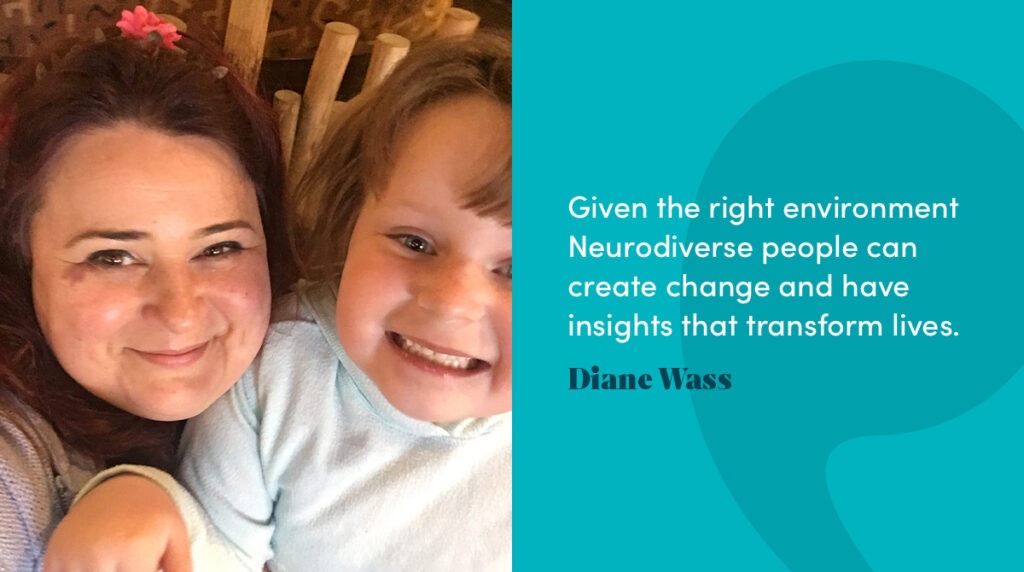
“To be yourself in a world that is constantly trying to make you something else is the greatest accomplishment”
Ralph Waldo Emerson
I am proud to say I have ADHD. It is what drives my insatiable curiosity and enables me to ask a million questions in parallel. Having a mind that bounces around at a million miles a minute enables you to spot patterns and trends that others miss, and it allows you to dig deeper for insights and conclusions that do not sit in the confines of the metaphorical ‘box’ (or the ‘human-set’ boundaries of an AI-machine learning tool-although I do enjoy them as a partner in my lateral thinking!). I wouldn’t want to give it up, as it is, without a doubt, my biggest gift.
Like many parents of neurodiverse children, my own diagnosis came in my late 40s as a result of my now 12-year-old daughter being diagnosed with autism, ADHD, and dyspraxia. There is no doubt that when in a ‘one-size fits all’ environment neurodiversity can present with challenges, and nowhere do we see this more than in the environment of mainstream schools where rigidity and lack of flexibility can be completely disabling for our kids. There is still much work to be done in both improving teacher training and creating inclusive spaces and curriculums that enable learning for all.
However, it is not only in our schools and further education environments that we need more inclusive and flexible approaches – we also need this in the workplace too. Not only is this morally the right thing to do, but because some of the most creative, talented people I know are Neurodivergent. It is estimated about 1 in 51 people are neurodivergent and can be a source of competitive advantage2. Given the right environment, these people can create change and have insights that transform lives.
Did you know- A recent study showed that 40% of self-made millionaires in Britain had a diagnosis of dyslexia3 and there is an association between ADHD and an entrepreneurial mindset in business4.
Whilst awareness of Neurodiversity is on the rise, there is still much that needs to be done to foster inclusive and diverse workplaces. As part of this year’s Neurodiversity Celebration Week, The Healthcare Communications Association is launching ‘Thinking Different’- A new campaign to welcome and celebrate neurodiversity across the healthcare communications industry. The campaign provides three great signposting resources:
- Neurodiversity & Me – a guide for those who think differently and would like more information because they’d like to start a conversation about neurodiversity
- Neurodiversity & You – information for whole teams to encourage them to find out more about working with, and having a conversation around, neurodiversity at work
- Thinking Different – a guide for employers and managers on welcoming and celebrating neurodiversity in the workplace
I have the privilege of joining a webinar panel to share how employers can embrace neurodiversity and foster an environment where every individual can contribute their talent. Those wishing to join the introductory webinar discussing the resources and their importance, can join at 1:00 pm GMT on Wednesday 20 March 2024 by registering at: https://bit.ly/48W4nTe
Here at JPA, ‘flexibility’ is key to ensuring we create an inclusive environment. In interviews, we focus on ‘what is actually needed’ for the specific role rather than a ‘one-size’ fits all approach. We adopt flexible working hours and give our employees the opportunity to ‘work at home’ when they need a ‘quiet space’ to focus. Overall, we are flexible on adjustments to the work environment that are tailored to the individual. This flexible, tailored approach, we believe, is at the heart of inclusion and creates an environment in which all our employees can thrive in.
Some other great resources I highly recommend to get you started on promoting neuro-inclusivity in your workplace are:
- The ADHD Foundation ‘Neurodiversity in the Workplace’ resources and services.
- The 2022 winner of the Diversity, Equity, and Inclusion category of the Business Book Awards, ‘Neurodiversity at work’ by Theo Smith and Amanda Kirby, which is a must-read!
In the words of St Catherine of Siena “Be who you were created to be, and you will set the world on fire”.
Diane Wass
Managing Director of JPA Health, International Region
Trustee of the ADHD Foundation-The Neurodiversity Charity
Originally Posted: March 2022
Revised and Updated: March 2024
References
- Doyle, N. (2020) Neurodiversity at work: a biopsychosocial model and the impact on working adults – PMC (nih.gov); Br Med Bull. 2020 Sep; 135(1): 108–125
- Information Week, 2023. Neurodiversity hiring will be a competitive advantage. Accessed via: https://www.informationweek.com/it-leadership/neurodiversity-hiring-will-be-a-competitive-advantage (Last accessed: March 2024)
- Alexander-Passe, N. (2015). Perceptions of success in Dyslexic adults in the UK
- Moore, C. B., McIntyre, N. H., Lanivich S E (2021) ADHD-Related Neurodiversity and the Entrepreneurial Mindset
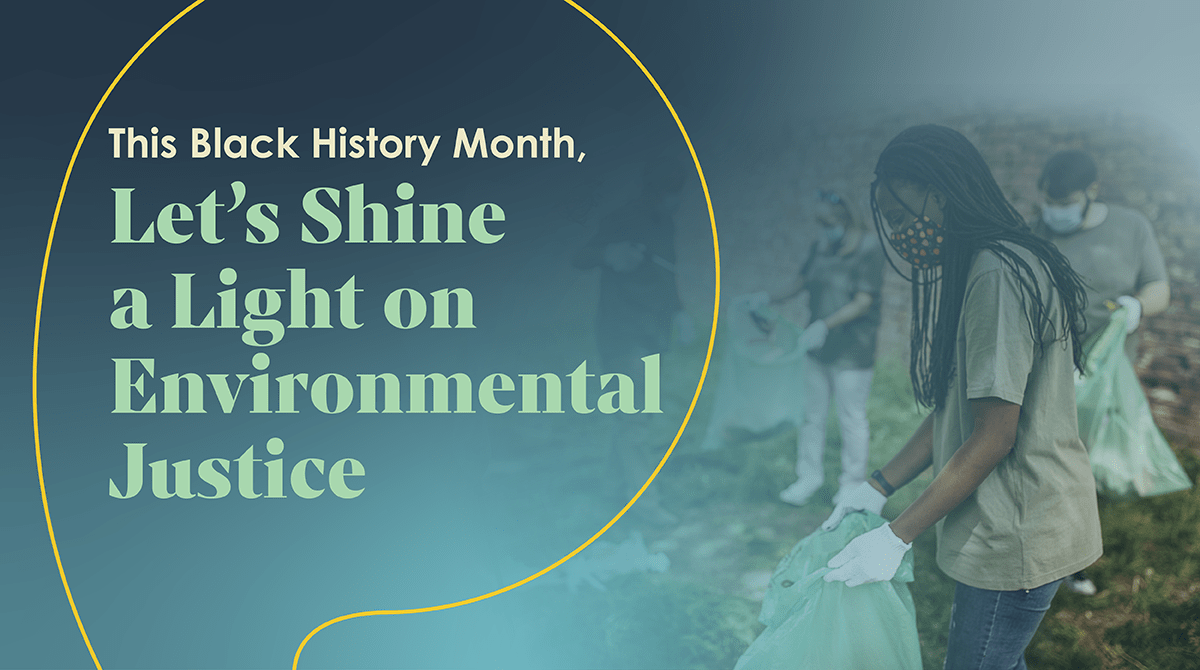
By Vanessa Grzyboski and Kamilah Guiden
Imagine living in an area where the air is thick with pollutants and the water is tainted with toxins. This is the reality for many Black and Brown communities every day. From North Carolina’s industrial pork production hubs to the infamous “Cancer Alley” in Louisiana, environmental injustice disproportionately affects populations who are under-resourced nationwide.
The Health Impact is Real
In North Carolina and beyond, concentrated animal feeding operations (CAFOs) are causing serious environmental issues. These facilities, housing animals for meat, dairy, or egg production, often store waste in open-air pits. Despite efforts to recycle nutrients by dispersing waste over cropland, this practice frequently leads to animal waste, including feces and urine, seeping into the surrounding environment.
Living near CAFOs has alarming health implications for people, including increased rates of asthma, anemia, kidney disease, infant mortality, and infections compared to rural areas without CAFOs. Communities with lower incomes and communities of color are more likely to be located near these industrial sites and, thus, are more likely to experience the associated health impacts.
Another hotspot of industrial activity is “Cancer Alley,” an 85-mile stretch along the Mississippi River that houses about a quarter of the U.S.’s total petrochemical production and 150 oil refineries, plastic processing plants, and chemical facilities. Here, too, the predominantly Black communities bear the brunt of environmental health injustice. The historical aftermath of Jim Crow laws and zoning regulations heighten the health hazards, which include a much higher cancer risk due to toxic air pollution, with estimates ranging from 104 to 105 cases per million—far beyond the 60 to 75 cases per million in predominantly white areas. Despite national improvements in air quality, Louisiana’s progress lags behind the rest of the country, underscoring the urgent need for targeted interventions and systemic reforms.
Disparities Growing Worse Among Communities of Color
Despite the illegality of discriminatory practices such as redlining and Jim Crow laws, the roots of these disparities continue to run deep, confining people of color to impoverished, polluted areas generations later.
Recent findings from the National Minority Quality Health Forum and CEO Roundtable on Cancer shed further light on the worsening disparities communities of color face. More than half (56%) of these communities live near sites emitting carcinogens, heightening their vulnerability to cancer. Black communities are disproportionately impacted, as they are up to 9% more likely to share watershed with industrial facilities and up to 13% more at risk for their community water systems to be near a wastewater treatment plant.
Governmental negligence and mismanagement make matters worse, leading to underinvestment in neighborhoods, high poverty rates, and declining public facilities. The Flint, Michigan, water crisis is one example, where a decision to switch water sources led to severe lead contamination. Similarly, in Washington, D.C., public housing construction near the Kenilworth Dump exposed people to toxic pollution, culminating in tragedies like the death of Kelvin Tyrone Mock. Despite closure, the area remains contaminated with toxic residue to this day.
Climate Change Creating More Urgency
Climate change adds another layer to these already dire circumstances; people who live in under-resourced communities face increased risks as severe weather events become more frequent and intense. Take the predominantly Black neighborhood of Centreville, Illinois, for example. After heavy rainfall and flash floods, residents dealt with immediate flooding and water lingering in their homes and streets for a long time. Neglected infrastructure, a product of structural racism, compounded the issue with sewage backups, further endangering residents’ well-being.
These incidents show an urgent need for comprehensive strategies to address historical injustices and climate change’s looming threats. Without swift action, communities that are disadvantaged will continue to shoulder the biggest burden of environmental crises.
Addressing This Complex Health Challenge Together
The concept of One Health emphasizes the interconnectedness of humans, animals, and the environment, highlighting collaboration across disciplines to address health challenges. However, JPA’s recent report on One Health reveals a troubling trend: stakeholders in animal, human, and environmental health often operate in siloes, while policymakers remain detached from the broader conversation. This disconnected approach makes it even harder to confront complex public health issues.
Tackling these complex challenges necessitates a comprehensive and multi-dimensional approach that includes the following key elements:
- Build local and national coalitions committed to preventing disease and promoting well-being, fostering collaboration among stakeholders from various sectors.
- Prioritize community engagement and empowerment as essential components of the strategy.
- Actively involve those affected by environmental injustice and amplify their voices in policy discussions to ensure that the needs of impacted communities inform solutions moving forward.
- Launch a focused educational campaign aimed directly at highlighting the urgent need to invest in targeted health interventions within affected communities, paving the way for more concrete and meaningful progress.
This year, let Black History Month serve as a reminder: the disparities outlined here are not inevitable outcomes—they are the direct result of systemic injustices that demand our collective attention and action. It’s time to step up together and take decisive action. Our environment isn’t merely a backdrop; it is the very foundation of our health and well-being.
Sources:
- How Black North Carolinians pay the price for the world’s cheap bacon
- Why Louisiana’s Air Quality Is Going From Bad to Worse, in 3 Charts
- Welcome to “Cancer Alley,” Where Toxic Air Is About to Get Worse
- What Is Environmental Racism?
- Unprecedented Rain Highlights Deep Inequities in Centreville
- Flint Water Crisis: Everything You Need to Know
- Advocates Are Sparking a Revolution in Louisiana’s “Cancer Alley”
- Policymakers, Patients, and Industry Join National Minority Quality Forum To Raise Alarm of Cancer Care Disparities in Minoritized Communities to White House Cancer Moonshot
- A ‘Forgotten History’ Of How The U.S. Government Segregated America
- Anacostia: Unbroken
- Healthy People 2030: Environmental Conditions
- Asthma Symptoms Among Adolescents Who Attend Public Schools That Are Located Near Confined Swine Feeding Operations
By Bethany Hardy, Senior Vice President, Media Relations
Talk to any media relations professional these days and you’ll surely get an earful about the grim media environment. The new year began with yet more depressing news for journalism as an industry, with the Los Angeles Times, Sports Illustrated, and National Geographic just the latest in the long line of outlets doing layoffs, and unionized staff at Forbes and several Conde Nast brands staging walkouts to protest cost-cutting and slow-going contract negotiations.
It’s unsettling, for sure. So, what are the key considerations for breaking through with the news media in 2024? Here are five things to remember:
1. Reporters are Warier than Ever About Misinformation – It’s a national election year, not just here in the United States, but in more than 60 countries around the world. And accordingly, responsible media outlets are cracking down even harder on misinformation. For example, the International Center for Journalism’s Disarming Disinformation Initiative will spend this year on initiatives that directly address election misinformation. What does this mean for pitching stories? Credibility will be key. Especially if you’re a pharma or healthcare company, you’ll have to work even harder to establish the burden of proof to validate your product claims with journalists. If you haven’t yet built up a roster of third party scientific and medical experts who can attest to your value, now’s the time.
2. It’s Time to Get Creative about Outlets and Beats – Even though news outlets are shrinking, news consumers are diversifying their sources. Consider pitching your stories in those less traditional channels that your audiences are frequenting. For example, subscriber exclusive e-newsletters like Bloomberg’s The Brink and The Everything Risk, and Axios’ Pro Rata, are increasingly popular. And start thinking more broadly about your pitch topics: make sure the story you’re pitching fits into an election narrative. Despite layoffs, many media outlets are readying for November by re-assigning beats to accommodate their election coverage. Therefore, if you’re pitching a health care story, be sure to think about your “so what” for audiences concerned about access to quality healthcare or the costs of prescription drugs.
3. The Bloom is Off the Podcast Rose – The last few years have certainly been a rollercoaster for podcasts as a viable media channel. As documented in this cheeky Vanity Fair article, the podcast industry has seen a downturn as of late, in light of multiple layoffs and some high-profile celebrity failures (read: Harry and Meghan). That said, there’s still strategic value in pitching podcasts – as long as you’re focused on connecting with those deeply popular, somewhat niche podcasts that still enjoy a high percentage of audience share. As podcasting expert Joni Deutsch recently shared in this Neiman Lab post, “We can make podcasting better by recognizing its power and audience, rather than focusing on its bottom line.” As Deutch aptly explains, podcasts in today’s environment should be leveraged for their audience “connection” rather than “commodity.”
4. Get to Know Gen Z, the Finicky News Consumers of the Future – Washington Post columnist Jennifer Rubin recently sparked some buzz with her attention-grabbing feature, “Gen Z might be the MAGA movement’s undoing,” based on a new Public Religion Research Institute survey of the cultural, media and political inclinations of the Gen Z cohort. A deeper look at the survey results sheds light on this cohort of news consumers. Namely, they’re quite mistrustful of mainstream media: the survey found that just four in ten of both Gen Z teens (40%) and adults (37%) say they trust news organizations. Many of those surveyed noted they prefer to “validate” news they read through their own research and independent journalists – yet another reminder that any media relations campaigns reaching this generation, especially with messages about health and wellbeing, need to be targeted accordingly.
5. Brevity, Brevity, Brevity! – It has always been important to keep email pitches short—but never more so than now, with staffing cuts and reporters taking on more responsibilities and tasks than ever before. According to Muck Rack, the average length of a successful pitch is 175 words. (Considering that this paragraph is about 100 words long, your whole email to a reporter really shouldn’t be much longer!) And even more important for brevity? Your email subject line. As the first thing a reporter sees when scrolling their in-box, it’s incredibly important to be eye-catching in the right way. If your subject line is too long, you’ve lost your chance. For example, a reporter will never see a subject line like “ACME Pharmaceuticals Chief Medical Officer Available to Share Tips on Biomarker Testing.” A far better option is: “Oncology Expert on Biomarker Testing.”
Despite the volatile outlook for journalism these days, there’s room for optimism. Reporters still have a job to do: report the news. The key is ensuring your media relations campaigns focus on clearly articulating what’s “new” (through data, human interest, and urgency) and targeting precisely the right journalists for your customized pitches. Investing this kind of time and forethought into your earned media relations activities will be well worth the effort, no matter how gloomy the media picture is in 2024.
For more tips from the JPA Health team, visit https://jpa.com/insights
Key Takeaway
– Despite the volatile outlook for journalism these days, there’s room for optimism.
– Here are 5 considerations for breaking through via earned media in today’s tumultuous environment.
Vital Signs: How JPA Health Shined a Spotlight to Reduce Physician Suicide
Physicians have one of the highest suicide rates of any profession. In collaboration with The Physicians Foundation, JPA Health raised greater awareness of the physician suicide epidemic and equipped physicians with essential tools to prioritize their well-being.

The Impact

6,000+
social media
posts
23.5K
engagements
24.7M
reach
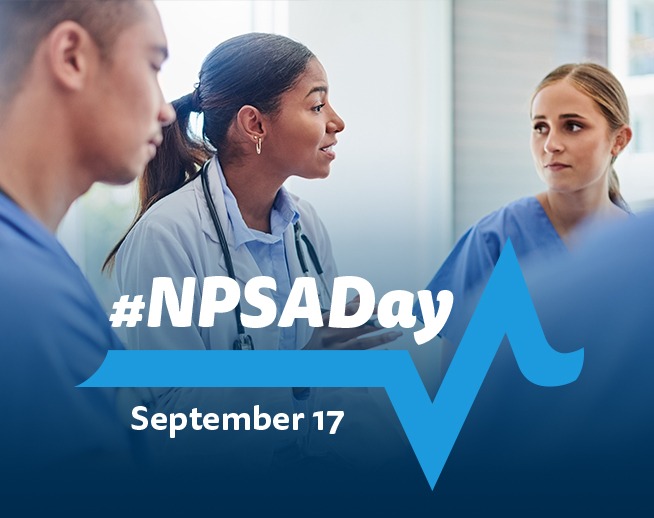
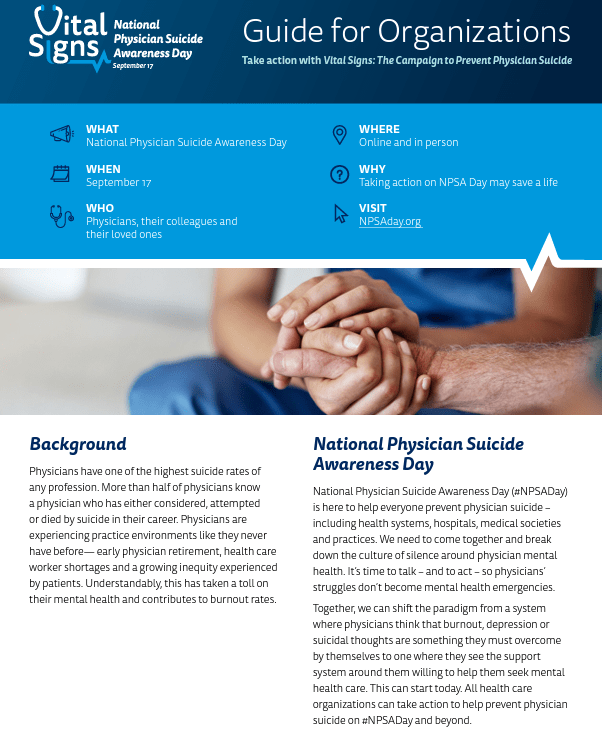
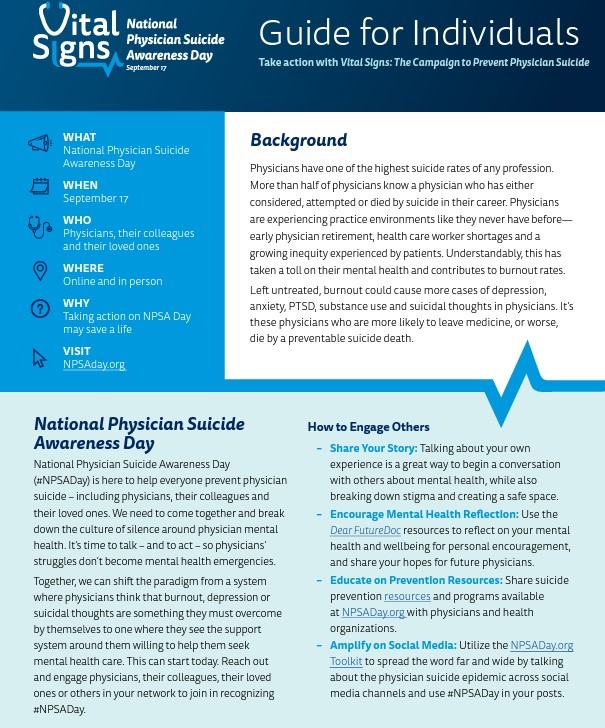

The Challenge
An estimated one million Americans lose their physician to suicide each year. The Physicians Foundation sought to raise awareness of the challenges facing physicians in order to make their voices heard and stem the suicide epidemic.
Our Approach
Leading up to and on National Physicians Suicide Awareness Day, JPA Health each year activated medical associations to engage via social media and online, while keeping available resources actionable and relevant. Recently, JPA Health was tasked with highlighting success stories on organizations that have implemented various wellbeing programs and initiatives.
The Solution
#NPSADay also gained 54 new supporting organizations in just one year, bringing the total to 108 supporting organizations. These organizations reached more than 700,000 people through their own newsletters, press releases and events highlighting #NPSADay and available resources.
Related Work
No One Missed: How JPA Health Made Biomarker Testing in Lung Cancer the Norm
The multi-year No One Missed campaign drove broad awareness of the importance of comprehensive biomarker testing in non-small cell lung cancer (NSCLC).

The Impact
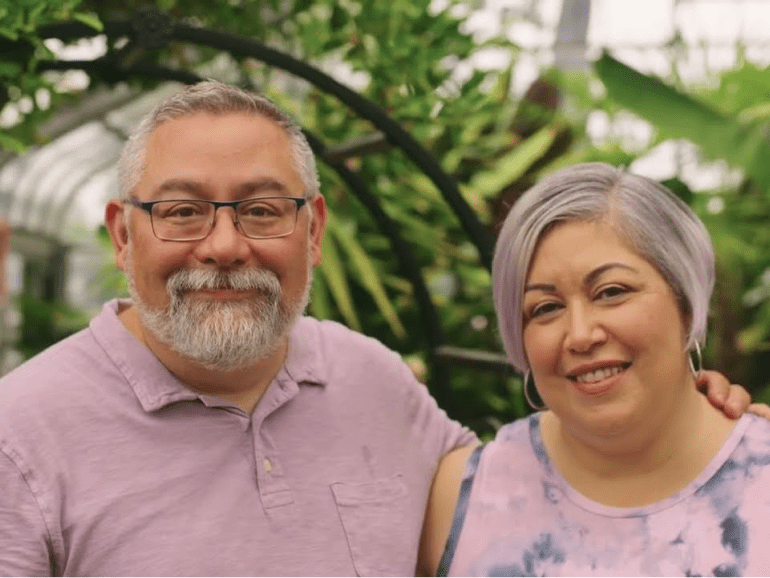
50M total
impressions,
double
the launch goal
>1,000
national and
local media
hits
700K
potential
audience
reached
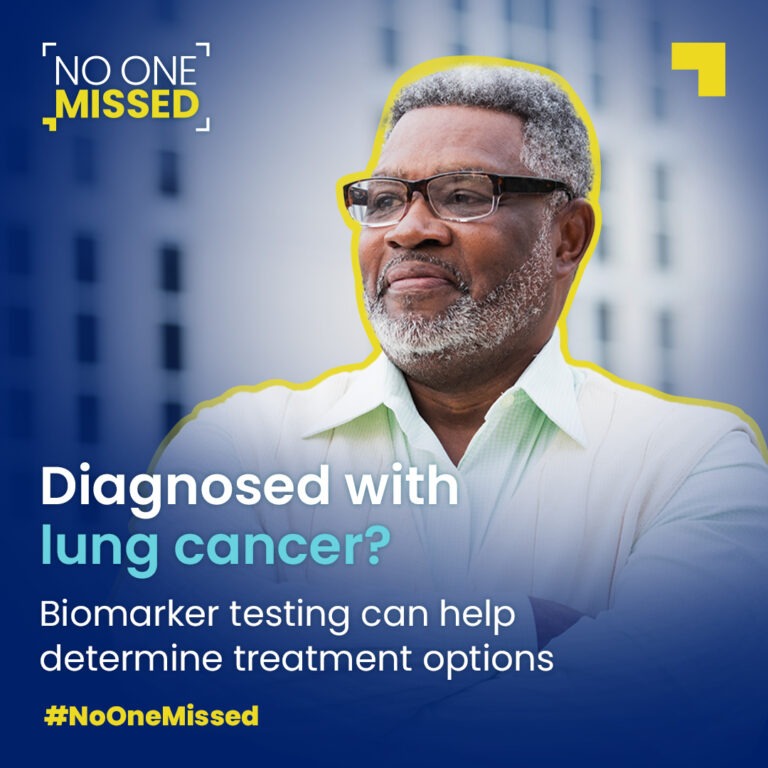
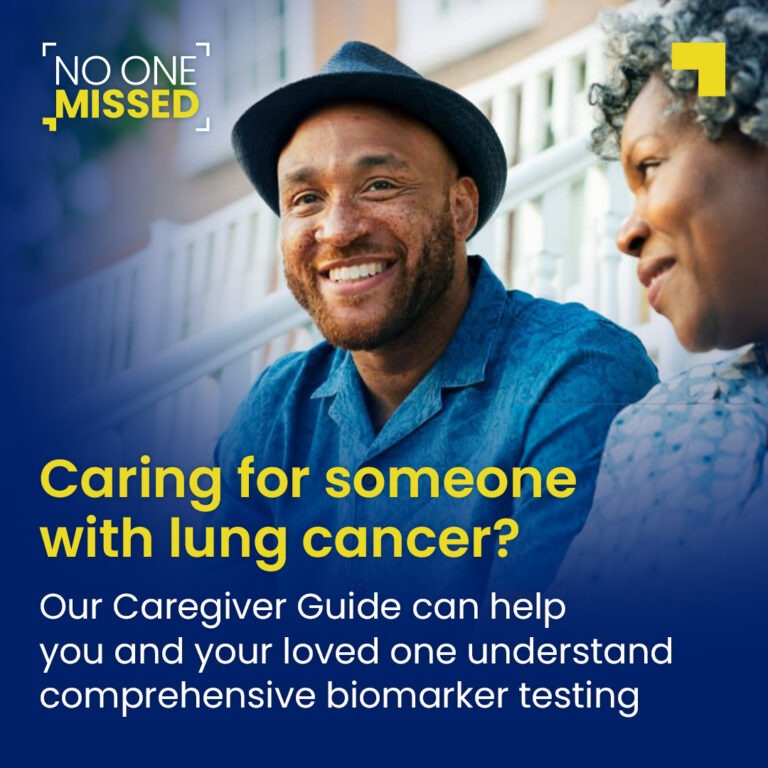
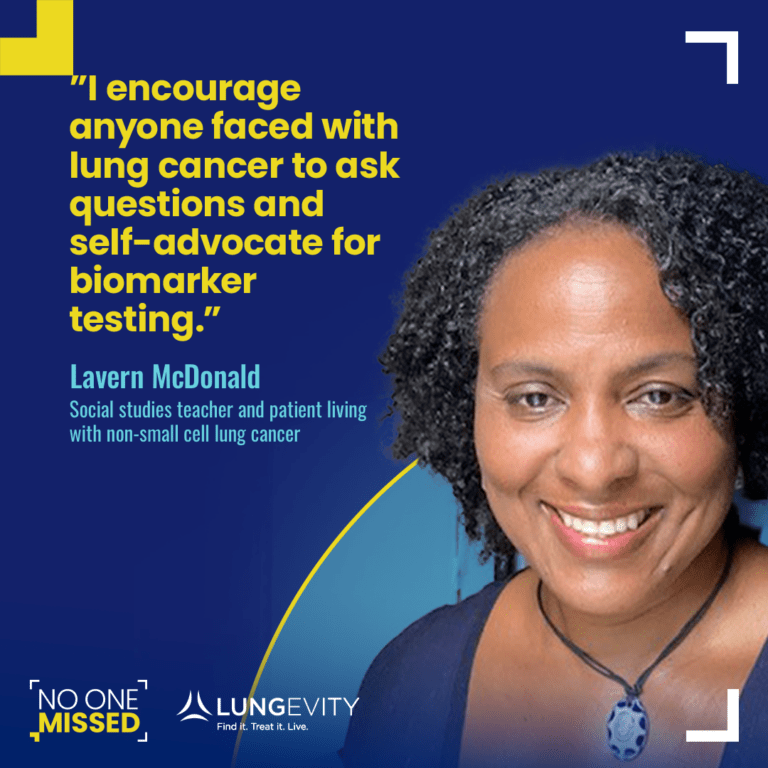

The Challenge
More than 235,000 Americans are diagnosed with lung cancer each year, but only a fraction of those received comprehensive biomarker testing to help them receive the best possible treatment. This disparity is especially marked among seniors, African Americans, Hispanic Americans and people with lower socioeconomic status.
Our Approach
With LUNGevity Foundation and dozens of industry and non-profit partners, JPA Health created the No One Missed campaign to enhance public awareness of comprehensive biomarker testing so that lung cancer patients knew to ask about testing at diagnosis, when critical treatment decisions are made. Seniors, African Americans, Hispanic Americans and people with lower socioeconomic status were given special attention to ensure the No One Missed campaign lived up to its name. A health literacy partner helped ensure core materials were readable and accessible to diverse audiences.
The Solution
JPA facilitated a strategic planning session with key advocacy leaders to steer the campaign’s core strategic objectives, messaging, tactics and timeline. In its first year, the campaign successfully collaborated with more than 30 partners across the pharma industry, patient advocacy groups and professional societies. In its second year, we focused on increasing inclusion of underserved populations by launching a public service announcement aimed at reaching these audiences in the U.S. and sought to build partnerships across Europe to increase reach. The campaign has continued to evolve with the unmet need, driving results to create lasting change.
Related Work
Embracing Complexity: How JPA Health Drove Action in Autism Research
JPA Health partnered with Autistica, the UK’s leading autism research charity, to unveil “Embracing Complexity,” a dynamic coalition committed to increasing awareness about the unique challenges faced by people living with Neurodevelopmental Conditions (NDCs).

The Impact

Successfully
launched in
the House of Commons
New
cross
-departmental
government
body for NDCs
50+
charities
joined
the coalition
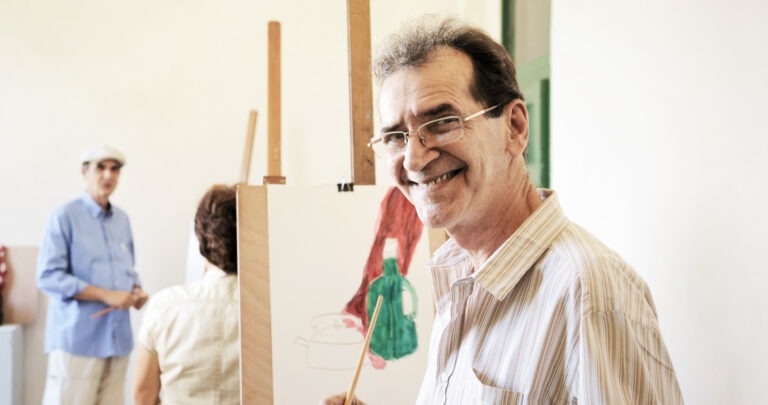






The Challenge
Autistica observed that a growing number of people with NDCs rarely had only one condition. Charities and other actors needed to come together to provide integrated support, where people living with NDCs were diagnosed earlier, better supported, and their talents could be fully leveraged in society.
Our Approach
JPA Health and Autistica launched the coalition in UK Parliament and created a campaign for the Embracing Complexity Coalition to raise awareness about the challenges faced by individuals with NDCs, emphasizing the need for collaboration among industry, government, and the public sector.
The Solution
JPA Health created #IEMBRACECOMPLEXITY for the coalition to raise awareness of people living with challenges of NDCs. The Embracing Complexity Coalition was formally launched in the House of Commons, where JPA Health secured the Secretary of State for Health and Social Care as a speaker, who announced a new governmental across-departmental unit to focus on people with NDCs, a key call to action of the coalition and their report.
The coalition has now grown to 50+ charities and has had a seat at the table re-designing the government’s autism strategy and neurodiversity services.
Related Work
Be The Match: How JPA Health Elevated Awareness of Donor Stories on National Television
In partnership with Be The Match, a leader in bone marrow transplantation, JPA told the stories of multiple patients and donors through a wide array of local and national media platforms, all synchronized with Good Morning America’s special coverage commemorating the 10th anniversary of Robin Roberts’ transplant.

The Impact

8,000+
potential donors
registered with
Be The Match
2,100+
broadcast
airings
36
million
impressions

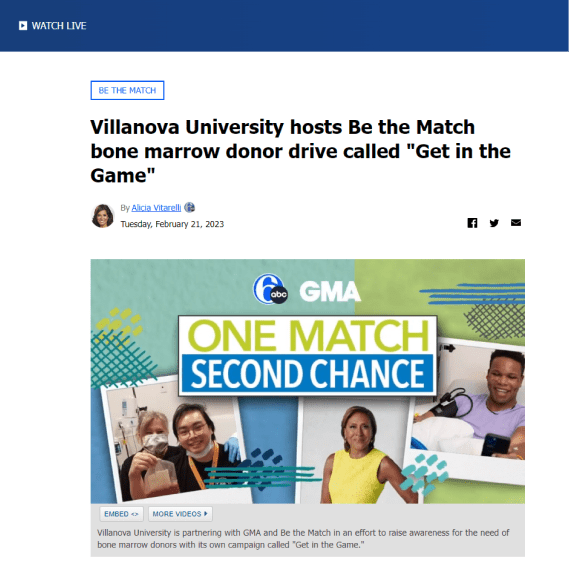



The Challenge
For patients diagnosed with leukemia, lymphoma and other life-threatening diseases, a bone marrow or cord blood transplant may be their best or only hope for a cure. Yet 70% of patients who need a transplant do not have a fully matched donor in their family.
Our Approach
As part of our support for Good Morning America’s “One Match, Second Chance” campaign, JPA Health and Be the Match worked together to educate consumers about the importance of registering to be a bone marrow donor.
The Solution
In just two weeks, JPA Health worked with multiple reporters, producers, and patients/donors to align on unique stories for each market in time for the Good Morning America event.
In addition to quickly securing nationwide coverage, JPA Health also helped arrange a donor drive in Los Angeles to generate media coverage, which resulted in a series of multiple live stories on top-ranked KABC-TV (ABC affiliate in Los Angeles).
Related Work
Public Health in Action
At JPA Health, we champion communications that are evidence-based, audience-focused, and culturally relevant to enhance public health and advance health equity.
Our Public Health practice supports organizations seeking to prevent disease, reduce health disparities, and improve the health and wellbeing of all people and communities. From our inception, we have collaborated with diverse partners in public health education, healthcare professional support, and community involvement. With decades of experience working with these organizations, we have addressed key public health issues such as social determinants of health (SDOH), chronic disease prevention, and vaccine advocacy. Our dedication remains strong as we continue serving an increasingly broad range of clients.
Our Passion and Commitment
Our team comes to work every day because of a genuine dedication to improving the public’s health, which includes a significant expertise and interest in both public health and health equity efforts.
We have long-standing relationships with nonprofit organizations, associations, and foundations, working to support public health communications as well as corporate communications needs. From public education campaigns on diabetes, thought leadership on access to birth control, or efforts to increase access to care for people with chronic kidney disease—which disproportionately impacts underserved communities of color, we collaborate with organizations large and small to create strategic, tailored communications initiatives. Further, with support from our International team, we’ve led a number of award-winning public health campaigns with global reach.
Our team of PR, marketing, and creative experts work together seamlessly—from traditional media outreach to paid advertising to the latest in digital influence.
Our core Public Health services include:
• Briefings and Events
• Influencer Mapping
• Patient Engagement
• Patient Support Programs
• Public Affairs Communications
• Stakeholder Mobilization
• Third-party Partnerships
Our Clients









Our Expertise
JPA Health is uniquely positioned at the heart of healthcare, partnering with organizations to create lasting impact.
JPA Health guides clients through every step of the healthcare journey, driving meaningful and lasting change.
At JPA Health, we combine industry expertise, creative storytelling, and data-driven strategies—including AI—to deliver solutions that engage, influence, and get results.



